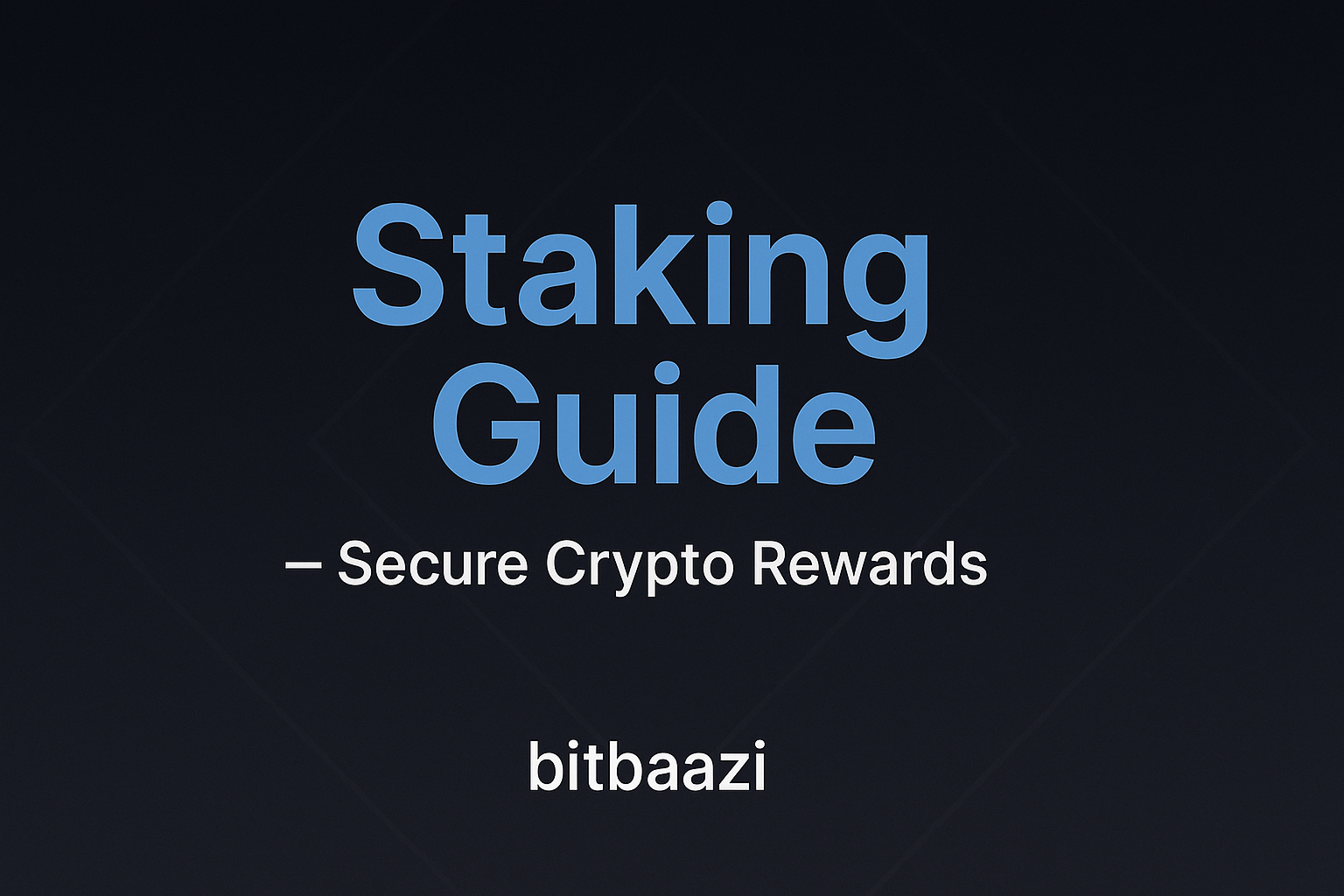Summary
• Earn protocol rewards by supporting proof-of-stake security.
• Choose solo, service, pool, or exchange routes with care.
• Understand penalties, exits, and safe setup before committing.
Staking aligns your capital with consensus so you can earn on-chain rewards while helping secure networks; choose a route that fits your skills, risk tolerance, and time.
What it does on proof-of-stake networks
Token holders bond assets so validators can finalize blocks.
Validators store data, process transactions, and occasionally propose blocks; on Ethereum, activating your own validator requires 32 ETH and client software, while other chains emphasize delegation to professional operators.
Rewards are paid by the protocol for correct participation, but requirements and roles differ across ecosystems; compare networks and participation models before you begin.
Rewards, penalties, and slashing
Rewards incentivize honest work; penalties deter downtime and attacks.
On Ethereum, missed duties reduce earnings, and dishonest behavior can be slashed—an immediate burn (up to 1 ETH) and removal over 36 days with a correlation penalty around Day 18 if many are slashed together.
In Polkadot’s NPoS, slashes scale with the number of offending validators; example outcomes include 0.09% for 1/100, 2.25% for 5/100, and 36% for 20/100 offenders in the active set.
How to participate and exit safely
Pick a method—solo, service, or pooled—that matches resources and custody needs.
Solo gives maximum control but needs 32 ETH and always-on hardware; managed services keep withdrawal keys with you but add counterparty risk; pooled approaches lower minimums but add smart-contract and provider risks. On Cardano, delegation is non-custodial via on-chain certificates.
For Ethereum specifically: verify the official deposit contract address via the foundation’s page, then follow Launchpad. After setup, set your withdrawal address; withdrawals (both periodic reward sweeps and full exits) are enabled since 2023-04-12 (Shanghai/Capella). Rewards are auto-swept to your withdrawal address; full exits depend on queue conditions.
FAQ
- How much ETH do I need to run a validator in 2025?
32 ETH; pools allow less, but risks differ. - When were ETH withdrawals enabled?
2023-04-12 via Shanghai/Capella; set a withdrawal address. - What are Ethereum’s slashing timelines?
Immediate burn (up to 1 ETH), removal over 36 days, penalty at Day 18. - How do Polkadot slashes scale?
Examples: 0.09% (1/100), 2.25% (5/100), 36% (20/100).
Takeaways
• Start with documentation and a test environment; know keys, clients, and uptime.
• Verify addresses from official pages; never paste from chats or random posts.
• Keep withdrawal/validator keys separate; rotate and back up securely.
• Understand exit mechanics and tax/logging in your jurisdiction; this is not investment advice.
作用与在共识中的位置
代币持有者把权益与共识绑定,帮助网络完成区块最终确认。
“Staking”常被用来指代这种参与方式:以太坊上自运行验证者需要 32 ETH 并运行客户端,其他网络更依赖将权益委托给运营方;验证者负责存储数据、处理交易与提议区块,正确参与即可获得协议奖励。
收益、罚没与不活跃惩罚
奖励鼓励诚实在线,罚没约束作恶与长期离线。
在以太坊,失职会扣减收益;作恶可能被罚没:立即焚毁最高 1 ETH,并在 36 天移除周期中于第 18 天触发相关性加罚(多人被罚时更重)。
在 Polkadot 的 NPoS 中,罚没随违规者数量放大:例如活跃集 100 个验证者中,1 个违规约 0.09%,5 个约 2.25%,20 个约 36%。
安全参与与退出
按资源与托管偏好选择:自营、托管服务或池化参与。
以太坊需先通过官方页面核对存款合约地址并走 Launchpad;设置提款地址后,奖励会定期自动划转;完整退出依队列而定,该功能自 2023-04-12(Shanghai/Capella)启用。Cardano 的委托通过上链证书,保持自托管属性。
役割とコンセンサスでの位置づけ
保有資産を担保に結合し、バリデータがブロック確定を支える。
Staking はこの参加形態の総称で、Ethereum では自前のバリデータに 32 ETH が必要で、他チェーンでは事業者への委任が中心です。バリデータはデータ保存・取引処理・ブロック提案を担い、正しい参加に報酬が支払われます。
報酬・ペナルティ・スラッシング
報酬は誠実な稼働を促し、罰則は停止や攻撃を抑止します。
Ethereum では不履行は減点、悪質行為は即時最大 1 ETH の焼却と 36 日の退出期間、18 日目に相関ペナルティが加算され得ます。
Polkadot の NPoS では違反数に応じて罰没率が拡大します。例:100人中1人で 0.09%、5人で 2.25%、20人で 36%。
安全な参加と退出
自営・サービス・プールの各方式から適合するものを選ぶ。
Ethereum は公式の入金契約アドレスを必ず確認し Launchpad を使用。出金アドレスを設定すると報酬は自動スイープされ、完全退出はキュー次第です。この機能は 2023-04-12(Shanghai/Capella)から有効。Cardano は証明書による非カストディ委任です。
